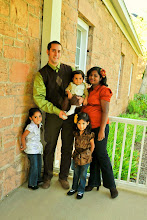


Traditionally we eat all vegan foods on Diwali.
We also eat on fig leaves too.
What a treat to be able to eat good food with your hands.
Yummy!!

Yummy Tamarind Amchar, we eat this with the
phlorie. A match made in heaven.. and its spicy too.
So watch out!

Diwali.....
This is a time of year (usually around October or November) where Hindus celebrate Diwali. A celebration of light over darkness and good over evil. Mostly known as the Festival of Lights.
During this time Hindus refrain from eating meat products. The name "Diwali" is a contraction of "Deepavali" (Sanskrit: दीपावली Dīpāvalī), which translates into "row of lamps".[4] Diwali involves the lighting of small clay lamps (diyas or dīpas) in Sanskrit: दीप) filled with oil to signify the triumph of good over evil. During Diwali, all the celebrants wear new clothes and share sweets and snacks with family members and friends. Most Indian business communities begin the financial year on the first day of Diwali.
Diwali commemorates the return of Lord Rama, along with Sita and Lakshman, from his fourteen-year-long exile and vanquishing the demon-king Ravana. In joyous celebration of the return of their king, the people of Ayodhya, the Capital of Rama, illuminated the kingdom with earthen diyas (oil lamps) and burst firecrackers.[5]
In Jainism, Diwali marks the attainment of moksha or nirvana by Mahavira in 527 BC.[6][7] In Sikhism, Deepavali commemorates the return of Guru Har Gobind Ji to Amritsar after freeing 52 Hindu kings imprisoned in Fort Gwalior by defeating Emperor Jahangir; the people lit candles and diyas to celebrate his return. This is the reason Sikhs also refer to Deepavali as Bandi Chhorh Divas, "the day of release of detainees".
The festival starts with Dhanteras on which most Indian business communities begin their financial year. The second day of the festival, Naraka Chaturdasi, marks the vanquishing of the demon Naraka by Lord Krishna and his wife Satyabhama. Amavasya, the third day of Deepawali, marks the worship of Lakshmi, the goddess of wealth in her most benevolent mood, fulfilling the wishes of her devotees. Amavasya also tells the story of Lord Vishnu, who in his dwarf incarnation vanquished the Bali, and banished him to Patala. It is on the fourth day of Deepawali, Kartika Shudda Padyami, that Bali went to patala and took the reins of his new kingdom in there. The fifth day is referred to as Yama Dvitiya (also called Bhai Dooj), and on this day sisters invite their brothers to their homes.
In Trinidad it is customary for everyone to celebrate this holiday, whether your Hindu or not. This was the first time that our family has celebrated Diwali since Jared and I were married. Jared celebrated along with other missionaries while he was in Trinidad. There are delicious sweets that accompany the holiday. However they were devoured before I can get a picture. Maybe next year and by then hopefully I will have a Sari or a Shalwar to wear for Diwali.


















No comments:
Post a Comment